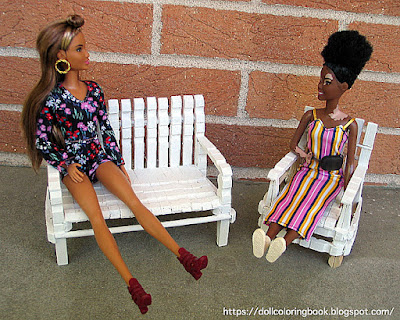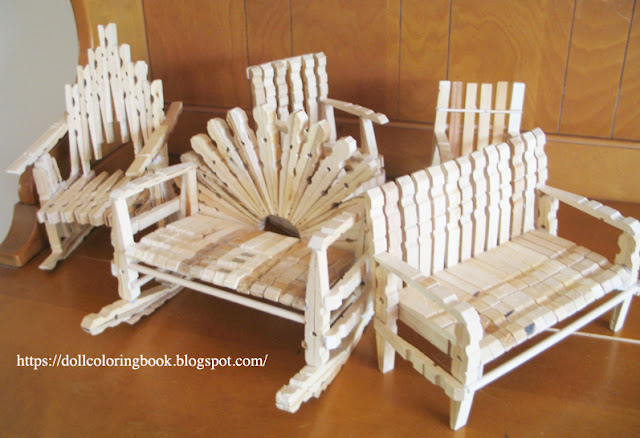 |
Above are photos of the refinished treats trolly by Our Generation, updated with faux wood
surfaces. Plus I had to restore the ice "sink" as it was missing from the piece I thrifted from
resale. I think this version looks far less manufactured. The new surfaces now look
antique! I kept the 'marble' top and added a sink that looks like enamel. |
I found this treat trolley at resale. None of it's original foods or ice cubes were still with it. But, not to worry, I will show how to restore these play foods along with this brief review for those of you who are in need of making new accessories for your own playset.
This trolley has three working wheels, is a periwinkle color with a granite looking top. There is a handle bar so that an 18 inch doll may be made to move the cart while she walks.
Originally, this cart would come with the following treats: a lemonade picture and two glasses of lemonade,
two snow cones, two ice blocks, an ice bin (photo above), two ice cream pops, two sodas, a large fruit tray (below), tongs and two serving spoons,
two dishes of ice cream and a floral display of some kind. Depending on the year you purchase this set, the flower pot with flowers may be different. I have also seen several versions of the fruit tray from different years and locations and some photos of the treat trolley also include a syrup bottle for the snow cones?
 |
The surfaces have yet to be changed. Here you can see that I fitted the new sink first.
It is made from cardboard, masking tape and later painted white. |
 |
Left, see details from beneath. Center close-up of sink for ice and cold drinks. Right, the handle
looks fine 'as-is' wouldn't change that at all. |
I decided to change the periwinkle color to better compliment our doll's cafe set. The faux granite top, a version in red, pink and white speckles, blends well with neutral grey and white so I will leave it alone. The gold colored handle bar also looks just as good with the chosen faux wood motif I selected for this project so this remained "untouched" as well.
I needed to make an ice bin to fill the hole in the top counter. I would have loved for it to been transparent like the original but I had to make it a painted cardboard ice bin instead. This version I painted white to blend with the granite top.
There were several surfaces on this trolley that were covered with something sticky. Although I couldn't identify this substance, I removed it easily with cooking oil and a paper towel. Then I washed the cart afterwards with dish soap and warm water.
I masked the periwinkle surfaces so that the decoupage would adhere properly. Then cut and fit the faux wood papers for every surface before applying even coats of white glue to the paper to stick to the trolley. Afterwards I sealed it with a several coats of Mod Podge.
 |
Left, I glued the Sculpey fruit slices directly inside of our covered tray. Center, side view. Right,
the fruits include in our new version of the fruit tray include top to bottom: cantaloupe
cubes, kiwi slices, apple sections, mangos peeled and slices and strawberries.
|
 |
This container once was used for a strange deck of cards.
|




















































